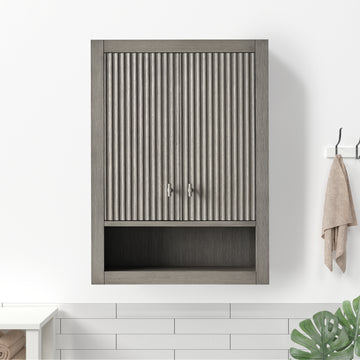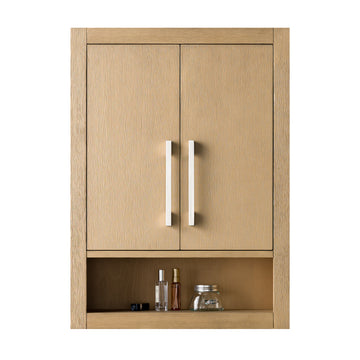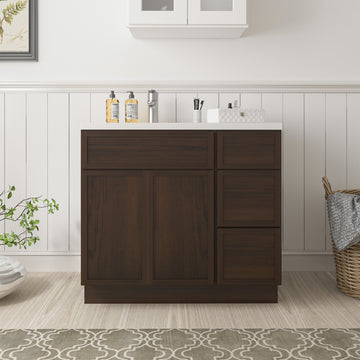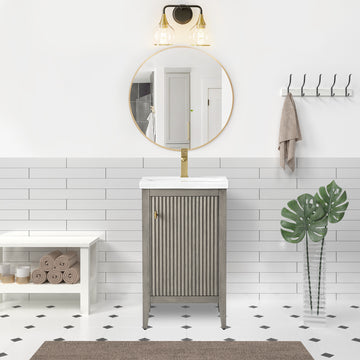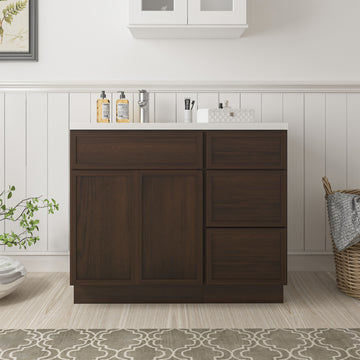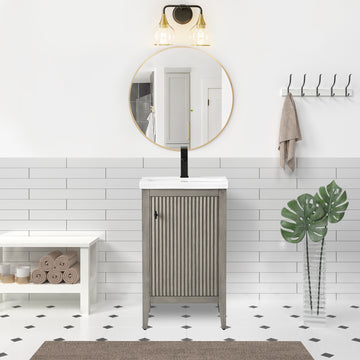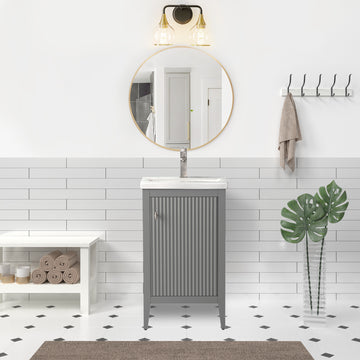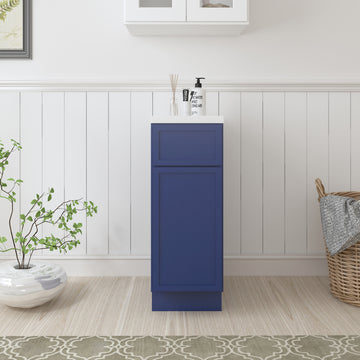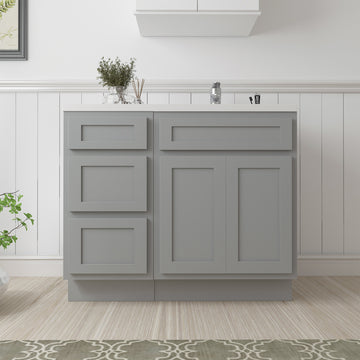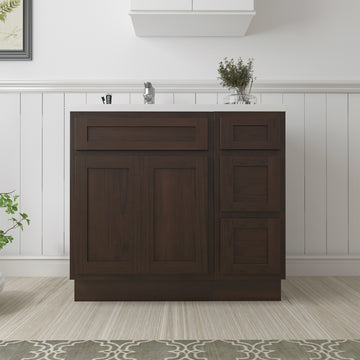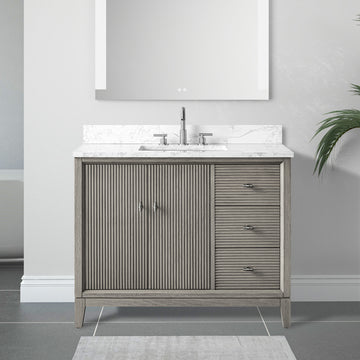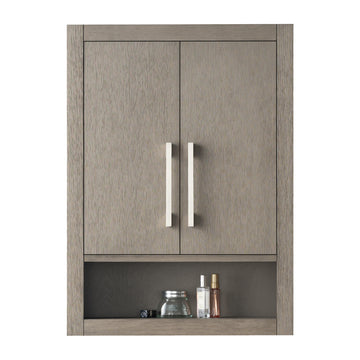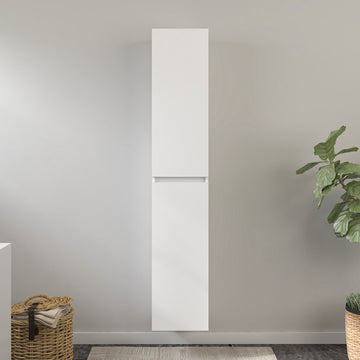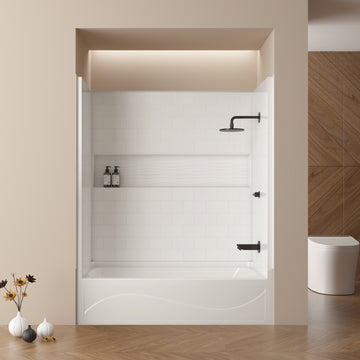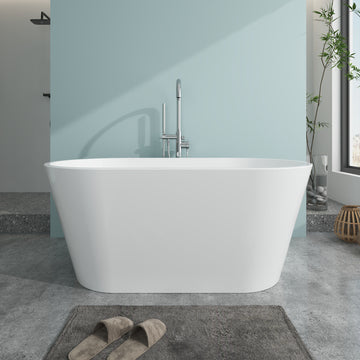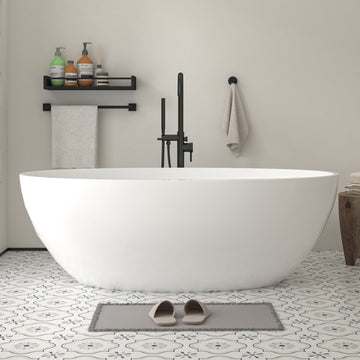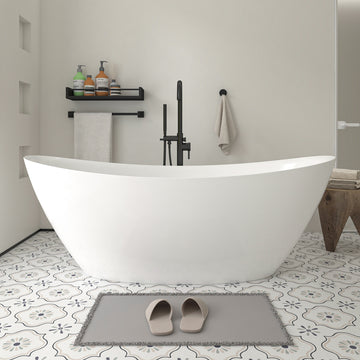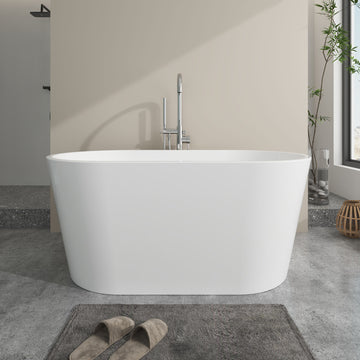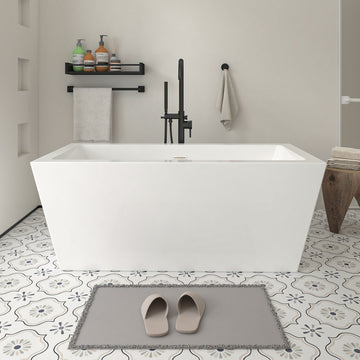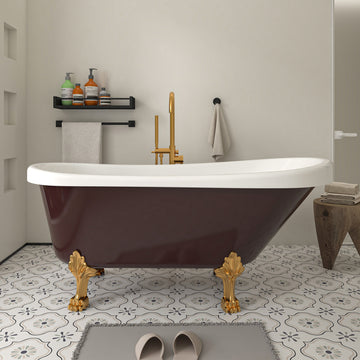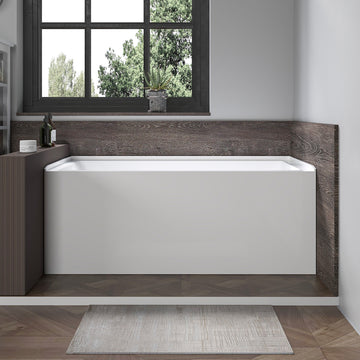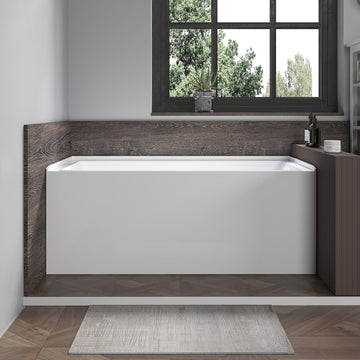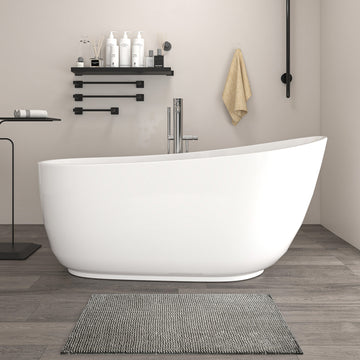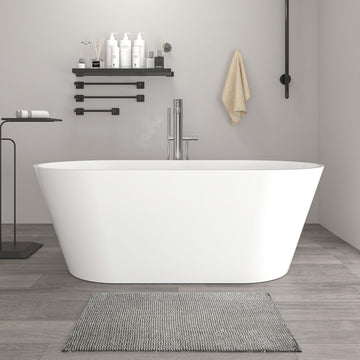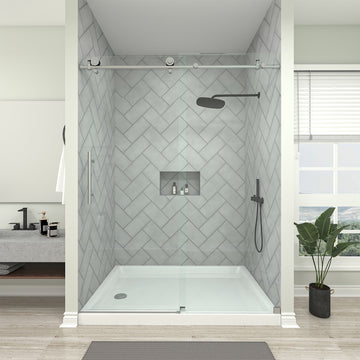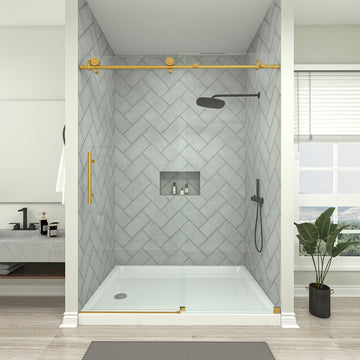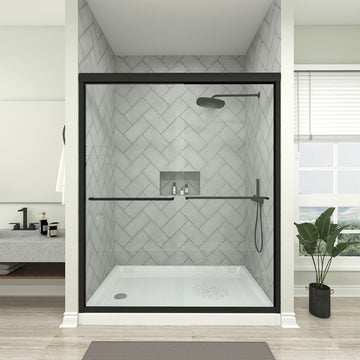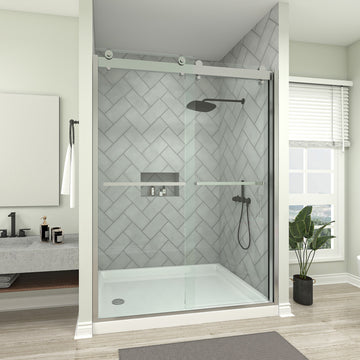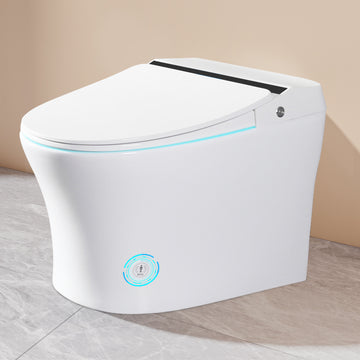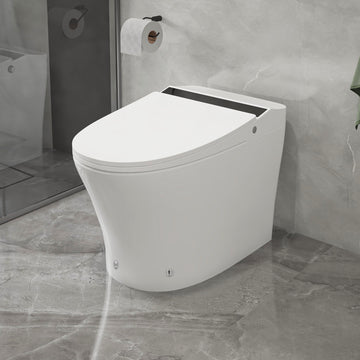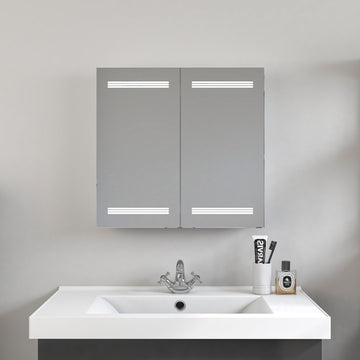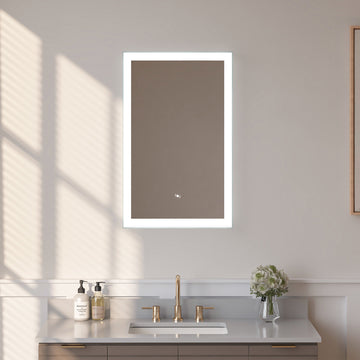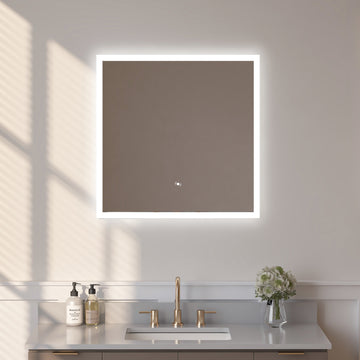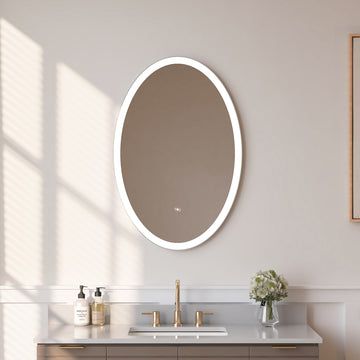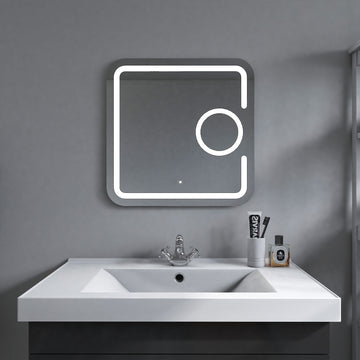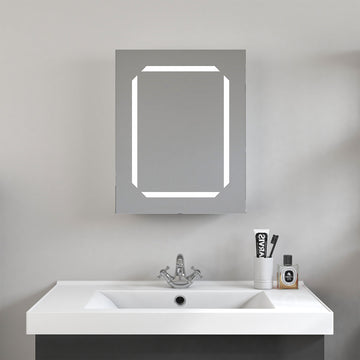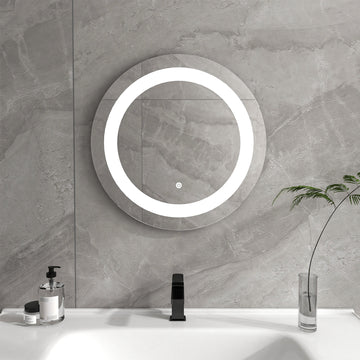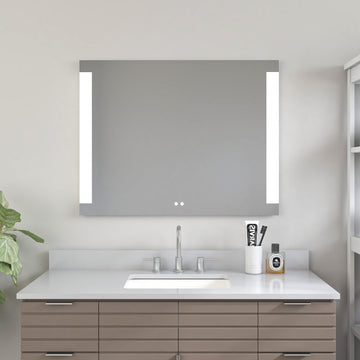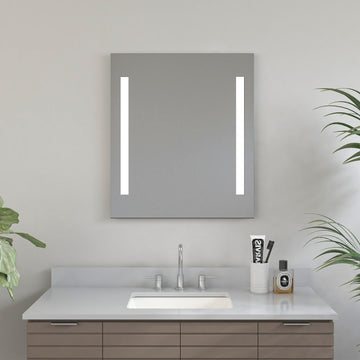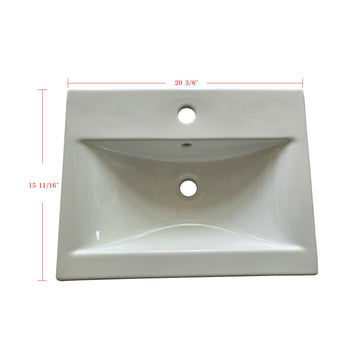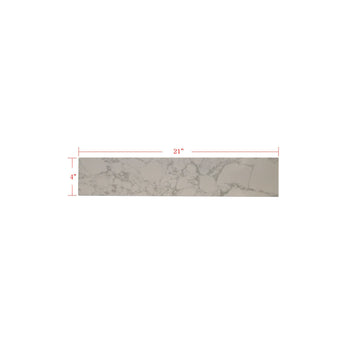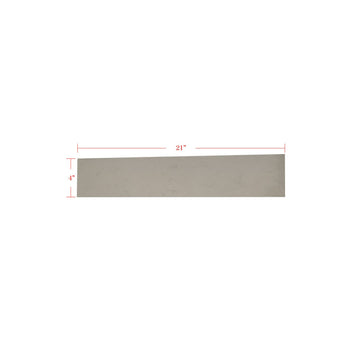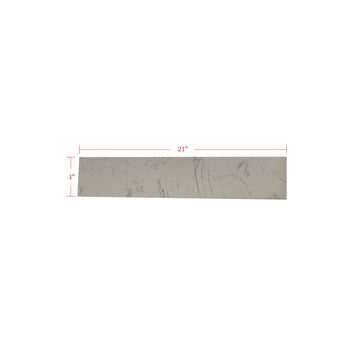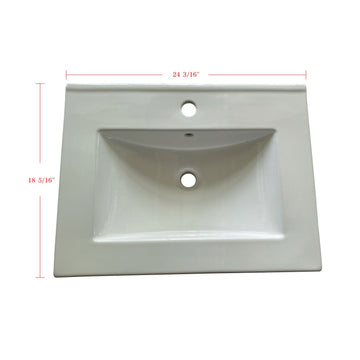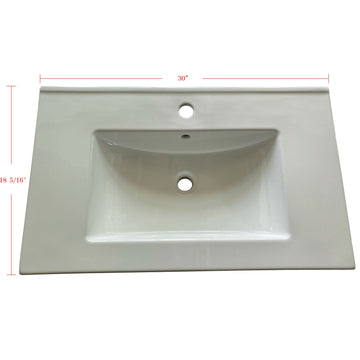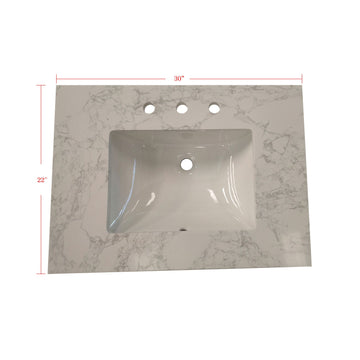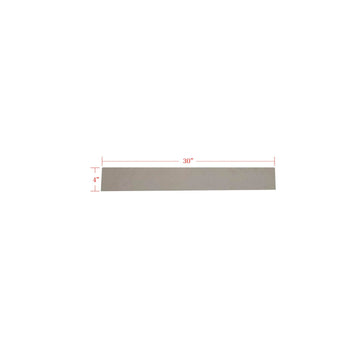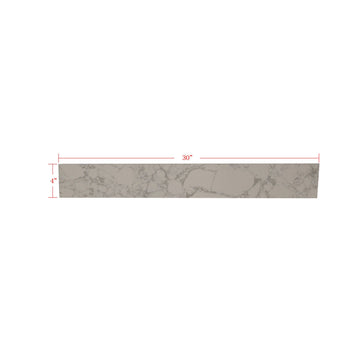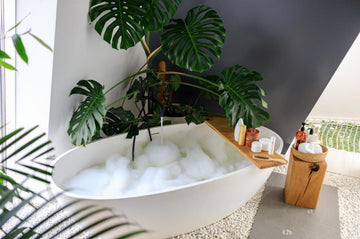Stone resin and acrylic are both popular materials for modern bathtubs, each with a strong following. They look sleek, feel smooth, and come in a wide range of styles. But when it comes to everyday use: heat retention, durability, price, and even installation, the two start to show real differences.
If you're weighing the options between these two, this comparison cuts through the fluff. We'll break down what acrylic and stone resin actually are, how they perform, and what makes each one worth considering. Depending on your budget, taste, and bathroom setup.
What is acrylic?
Acrylic bathtubs are made from sheets of vacuum-formed polymethyl methacrylate (PMMA). It’s a type of plastic known for being lightweight, moldable, and glossy. These tubs are usually reinforced with fiberglass to improve stability and durability.
The final result is a bathtub that’s smooth to the touch, resistant to chipping, and easy to shape into modern or classic forms. It’s THE most common bathtub materials today, mainly because it hits a sweet spot between affordability and appearance. However, since acrylic is a softer material, it can be more prone to surface scratches over time, though many of these can be buffed out.
What is stone resin?
Stone resin, sometimes referred to as solid surface or composite stone, is made by blending crushed natural stone (like marble or quartz) with synthetic resins and bonding agents. The mixture is poured into molds and cured into a solid, non-porous material that mimics the look and feel of natural stone, without the extreme weight or maintenance.
The result is a heavy, durable tub with a matte or satin finish and a minimalist, high-end aesthetic. Stone resin tubs tend to retain heat well and feel substantial under the hand. Unlike acrylic, the surface has more of a solid, stone-like feel and can often be refinished if damaged.
Stone resin vs. acrylic tubs
When comparing stone resin and acrylic bathtubs, the decision ultimately depends on what you value most: cost-efficiency, longevity, appearance, or comfort. Each material has distinct strengths and weaknesses, and understanding how they stack up across key factors can help you make a better-informed choice.
Durability & lifespan
Stone resin is noticeably more durable than acrylic. Its composition is made from crushed stone and binding agents, giving it a solid, dense structure that resists warping, cracking, and chipping. These tubs tend to last decades without showing signs of surface wear, making them an excellent long-term investment.
Acrylic tubs, while reasonably durable, are more prone to surface scratches and stress fractures over time, especially in high-use settings. However, many minor scratches can be sanded or buffed out, and when reinforced with fiberglass, acrylic’s structural integrity is significantly improved. Still, its overall longevity doesn’t quite match up to that of stone resin.
Verdict
-
Stone resin wins for structural durability and long-term performance.
Heat retention
A hot bath is only as good as the tub’s ability to hold the temperature. Stone resin excels in this area. Its dense material retains warmth significantly longer, giving you a more consistent and comfortable soak.
Acrylic bathtubs are also fairly warm to the touch and heat up quickly, but they lose heat more rapidly than stone resin. For short baths, the difference is minimal. For longer soaks, stone resin offers a noticeable upgrade in comfort.
Verdict
-
Stone resin offers better heat retention. Acrylic is adequate for shorter baths.
Weight & installation
This is one of the clearest dividing lines between the two. Stone resin tubs are heavy. They sometimes exceed 300 lbs, which means they often require reinforced flooring and more effort (or labor costs) during installation. Moving them into upper-floor bathrooms can also be challenging.
Acrylic tubs, by contrast, are extremely lightweight. Most models can be lifted and installed by two people without the need for structural reinforcements. If you're renovating an older home or want to DIY the installation, acrylic is the far easier choice.
Verdict
-
Acrylic wins for ease of installation and lower structural demands.
Aesthetics & design options
Stone resin tubs typically come in clean, modern shapes with matte finishes and minimalist silhouettes. They have a premium look and feel that resembles natural stone without being overly flashy. They're ideal for contemporary or spa-inspired bathrooms where texture and subtlety matter.
Acrylic offers far more variety in terms of color, shape, and finish. Since it’s molded plastic, manufacturers can experiment more freely. Whether you want a clawfoot design or a bold color choice. Glossy finishes are common, giving it a clean, bright look.
Verdict
-
Stone resin wins on modern luxury; acrylic wins on versatility and range of design.
Maintenance & cleaning
Both materials are relatively low-maintenance, but there are slight differences. Stone resin is non-porous and resists stains well. It doesn’t require special cleaning products and rarely shows water spots or buildup. That said, its matte finish can show scratches more clearly, although these are often reparable with fine sanding.
Acrylic is also easy to clean and resists mold and mildew. However, its glossy finish can be scratched by abrasive cleaners, and over time it may lose its shine if not properly cared for. Still, with gentle cleaning methods, it holds up well in most households.
Verdict
-
A slight edge to stone resin for long-term stain resistance and finish longevity.
Cost
Acrylic is more budget-friendly by a wide margin. You can find a wide range of acrylic tubs starting in the few-hundred-dollar range, making it accessible for almost any bathroom renovation.
Stone resin, on the other hand, sits in the mid to high-end price range. It’s more expensive due to its materials, manufacturing process, and shipping weight. However, many see the cost as justified by its durability and luxurious look.
Verdict
-
Acrylic wins clearly on affordability. Stone resin appeals to those seeking a long-term upgrade.
Summary
|
Feature |
Stone Resin |
Acrylic |
|
Durability |
Very high, resistant to cracks |
Moderate, prone to surface wear |
|
Heat Retention |
Excellent |
Fair to good |
|
Weight |
Heavy, needs strong support |
Lightweight, easy to install |
|
Design/Aesthetics |
Sleek, modern, stone-like feel |
Versatile, wide range of shapes/colors |
|
Maintenance |
Low-maintenance, matte finish |
Easy to clean, but prone to scratches |
|
Cost |
Mid to high |
Budget-friendly |
Other options besides stone resin and acrylic
While acrylic and stone resin are among the most popular choices, several other materials are also commonly used for bathtubs. Each with its own unique appeal. Cast iron is one of the most durable and classic options, known for its excellent heat retention and heavy, enameled finish. Porcelain-coated steel tubs offer a similar look at a lower price point but can chip more easily.
If you’re looking for something sleek and contemporary, stainless steel tubs provide a minimalist, industrial look and are lightweight compared to cast iron. Meanwhile, solid surface and copper tubs cater to more luxurious or statement-driven bathrooms, often commanding higher price tags.
Each material offers a different experience in terms of comfort, weight, upkeep, and aesthetics. It’s worth browsing beyond just acrylic and stone resin if your bathroom vision leans in a specific direction.
Stone resin or acrylic?
Both stone resin and acrylic bathtubs bring solid advantages to the table. It ultimately comes down to what matters most in your space. If you're after a lightweight, affordable option that still delivers in style, acrylic is a reliable pick. But if you lean toward durability, a more solid feel, and a premium aesthetic, stone resin might be worth the investment.
There’s no one-size-fits-all answer, and that’s the point. The best bathtub for you is about how it fits into your daily life, your bathroom’s design, and your long-term plans.
